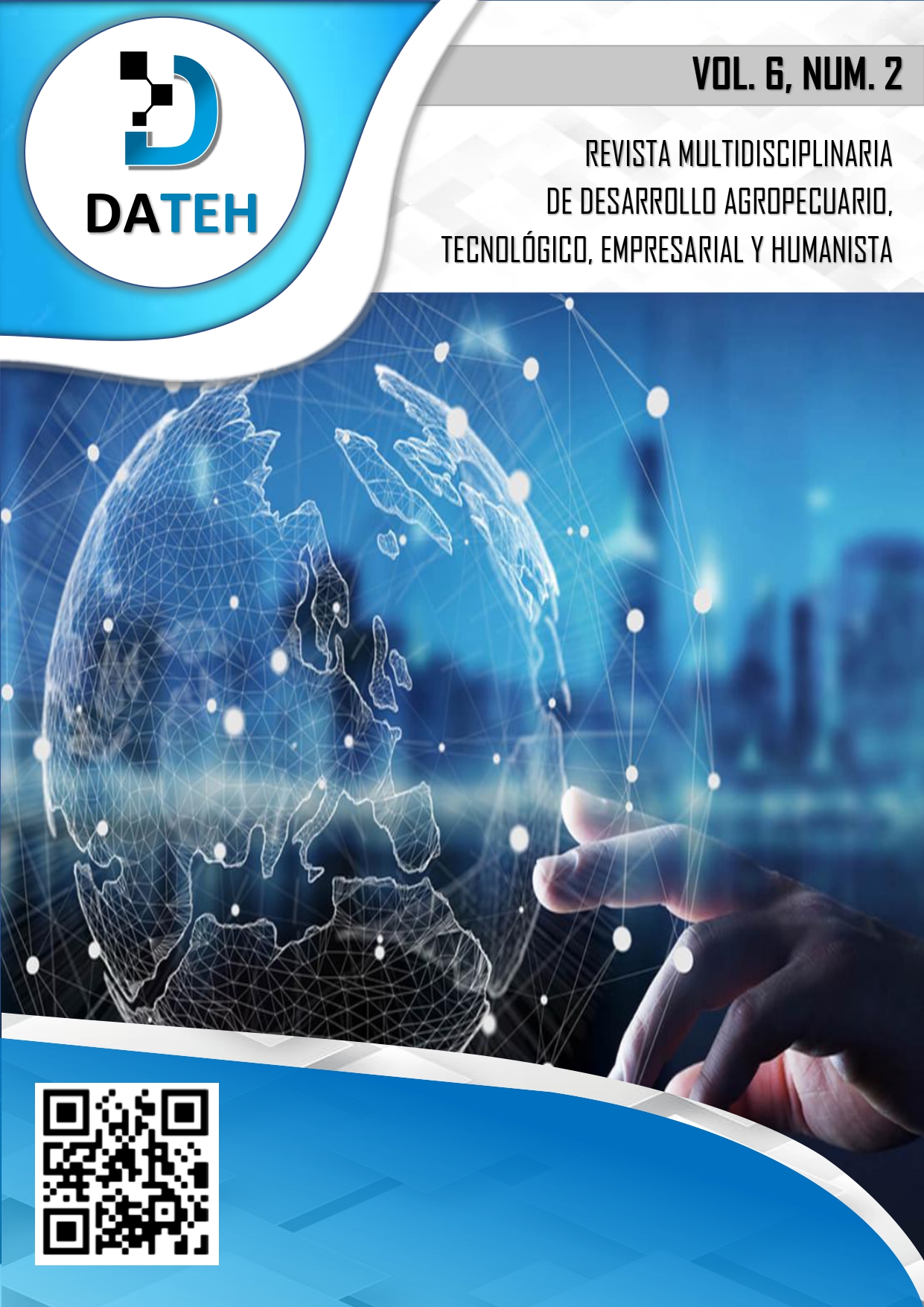The use of technological resources to foster students' oral production: teachers' preception
Abstract
This current research focuses on university English teachers' perceptions about the effectiveness of using technological resources in their virtual classes to foster students' oral production. The aim is to determine whether instructors believe such tools enhance their students' speaking ability in online classes. A quantitative methodology featuring a cross-sectional descriptive design was employed, utilizing a structured close-ended questionnaire administered to 27 teachers from the Institute of Languages at the University of the Armed Forces - ESPE. The findings indicate that the predominant resources utilized to enhance oral production comprise language learning games and social networks, attributed to their interactive nature and capacity to sustain student motivation. In addition, applications created to improve listening skills and educational YouTube channels are widely used, for this reason, educators generally regard technological tools as fundamental and effective in developing oral productivity. Nevertheless, they do not feel that these tools significantly encourage a collaborative or inclusive learning environment in online classes. The value of this study lies in identifying points where technological resources can become more effective in providing the necessary input to further develop the use of technology in English online classes.
Downloads
References
Al-Kassab, M. M. (2022). The Use of One Sample t-Test in the Real Data. Journal of Advances in Mathematics, Vol 21(1), 134-138. https://doi.org/DOI: https://doi.org/10.24297/jam.v21i.9279
Arias-Gómez, J., Villasís-Keever, M. Á., & Miranda-Novales, M. G. (2016). El protocolo de investigación III: la población de estudio. Revista Alergia Mexico, 63(2), 201-206. https://doi.org/https://doi.org/10.29262/RAM.V63I2.181
Bonilla-Guachamín, J., Jadán-Guerrero, J., Rojas-Londoño, D., & Ramos-Galarza, C. (2020). Relationship Between Technological Resources and Meaningful Learning in Secondary Students. En W. Karwowski, T. Ahram, D. Etinger, & N. Tanković, Human Systems Engineering and Design III. IHSED 2020. Advances in Intelligent Systems and Computing (págs. 98-102). Springer, Cham. https://doi.org/https://doi.org/10.1007/978-3-030-58282-1_32
Cardoso, W. (2022). Technology for Speaking Development. En T. M. Derwing, M. J. Munro, & R. I. Thomson, The Routledge Handbook of Second Language Acquisition and Speaking (pág. 15). Routledge.
Creswell, J. W. (2012). Educational Research: Planning, Conducting, and Evaluating Quantitative and Qualitative Research. Londres: Pearson.
Cruz, S., & Torres, A. (2022). VIRTUAL AND IMMERSIVE LEARNING ENVIRONMENTS USING ARTSTEPS: EXPLORATORY STUDY WITH TEACHERS. International Conference e-Learning 2022. Portugal. chrome-extension://efaidnbmnnnibpcajpcglclefindmkaj/https://www.iadisportal.org/components/com_booklibrary/ebooks/202203C022.pdf
Duailibi, C. F., Valentim, C. C., Souza, M., Souza, M., & Barros, M. D. (2020). Recursos tecnológicos como possibilidades para a prática pedagógica. SCIAS - Educação, Comunicação e Tecnologia, 2(1), 99-116. https://doi.org/https://doi.org/10.36704/sciaseducomtec.v2i1.4690
Garcia-Marques, T., & Bártolo-Ribeiro, R. (2020). The closed-ended questions formats: The nature, validity and reliability of their responses. Análise Psicológica, 38(2), 271-288. https://doi.org/https://doi.org/10.14417/AP.1659
Ghory, S., & Ghafory, H. (2021). The impact of modern technology in the teaching and learning process. International Journal of Innovative Research and Scientific Studies, 4(3), 168-173. https://doi.org/https://doi.org/10.53894/ijirss.v4i3.73
Guebba, B. (2021). The Nature of Speaking in the Classroom: An Overview. Middle East Research Journal of Linguistics and Literature, 1(1), 9-12. https://doi.org/DOI: 10.36348/merjll.2021.v01i01.002
Günüç, S. (2017). TECHNOLOGY INTEGRATION IN ENGLISH LANGUAGE TEACHING AND LEARNING. Günüç, S. (2017). TECHNOLOGY INTEGRATION IN ENGLISJournal of Teaching English for Specific and Academic Purposes, 5, 349-358. https://doi.org/http://dx.doi.org/10.22190/JTESAP1702349G
Iqbal, S., Niazi, S., & Hafeez, M. (2021). Iqbal, S.P., Niazi, S., & Hafeez, M. (2021). Developments oTechnology Integration in Language Teaching and Learning. Global Educational Studies Review., 1, 20-28. https://doi.org/https://doi.org/10.31703/gesr.2021(vi-iii).03
Liesa-Orús, M., Latorre-Cosculluela, C., Vázquez-Toledo, S., & Sierra-Sánchez, V. (2020). The Technological Challenge Facing Higher Education Professors: Perceptions of ICT Tools for Developing 21st Century Skills. Sustainability, 1, 3-14. https://doi.org/https://doi.org/10.3390/su12135339
Murairwa, S. (2015). VOLUNTARY SAMPLING DESIGN. International Journal of Advanced Research in Management and Social Sciences, 4(1), 185–200.
Nahartini, D., Latifa, R., & Setiono, D. P. (2018). University Teachers Perceptions of Using Computer Technology in An Indonesian English Language Classroom. 2018 6th International Conference on Cyber and IT Service Management (CITSM), (págs. 1-5). Parapat. https://doi.org/doi: 10.1109/CITSM.2018.8674328
Patel, S., Boulton, A. K., Redoblado-Hodge, M. A., Papanicolaou, A., Barnett, D., Bennett, B., . . . Guastella, A. J. (2020). The Acceptability and Efficacy of Electronic Data Collection in a Hospital Neurodevelopmental Clinic: Pilot Questionnaire Study. JMIR Formative Research, 5(1), 1-28. https://doi.org/https://doi.org/10.2196/18214
Qutishat, D., Obeidallah, R., & Qawasme, Y. (2022). An Overview of Attendance and Participation in Online Class During the COVID Pandemic: A Case Study. iJIM, 103-114.
Reiter, G., & Matthaeus, W.-G. (2000). Marktforschung und Datenanalyse mit EXCEL: Moderne Software zur professionellen DatenanalyseMit praxisbezogenen Beispielen und zahlreichen Übungsaufgaben. Oldenbourg Wissenschaftsverlag. https://doi.org/https://doi.org/10.1515/9783486803761
Rio, M. M. (2020). Digital technologies and the oral production development in ELT: Echoing worldwide teacher's voice. The Especialist, 41(5), 1-25. https://doi.org/https://doi.org/10.23925/2318-7115.2020V41I5A4
Roig-Vila , R., Mengual-Andrés, S., Asmussen , C. S., & Medrano, P. Q. (2015). Actitudes hacia los recursos tecnológicos en el aula de los futuros docentes. Revista d'Innovació Educativa, 15, 12-19. https://doi.org/DOI: 10.7203/attic.15.7220
Roy, P., & Kant Sahu, K. (2024). Building a roadmap for content validation: 6C model and validity index. International Journal of Research in Management, 6(1), 110-114. https://doi.org/https://doi.org/10.33545/26648792.2024.v6.i1b.130
Spriggs, A., Lane, J. D., & Gast, D. L. (2018). Visual Representation of Data. Routledge. https://doi.org/http://dx.doi.org/10.4324/9781315150666-7
Srivastava, R. (2021). Unlocking Technology for Language Learning: A Viability at the Time of Transition from Traditional to Online Teaching and Learning. Arab World English Journal, 1, 96-102. https://doi.org/https://doi.org/10.24093/AWEJ%2FMEC2.7
Tarusha, F., & Bushi, J. (2024). The Role of Classroom Observation, Its Impact on Improving Teacher's Teaching Practices. European Journal of Theoretical and Applied Sciences, 2(2), 718-723. https://doi.org/https://doi.org/10.59324/ejtas.2024.2(2).63
Tünde, N. (2021). Using Technology for Foreign Language Learning: The Teacher’s Role. Central European Journal of Educational Research, 3(2), 23-28. https://doi.org/https://doi.org/10.37441/cejer/2021/3/2/9347
Twycross, A., & Shields, L. (2004). Statistics made simple. Part 2. Standard deviation, variance and range. Paediatric nursing, 16(5), 1-24. https://doi.org/https://doi.org/10.7748/PAED2004.06.16.5.24.C922
Yun, V. W., Ulang, N. M., & Husain, S. H. (2023). Enhancing Content Validity of the Designed Hierarchy of Controls Instrument in Preventing Infectious Diseases on Construction Sites: A Multidimensional Approach. Journal of Advanced Research in Applied Sciences and Engineering Technology, 32(2), 508-521. https://doi.org/https://doi.org/10.37934/araset.32.2.508521
Zulfiqar, A., Bala, B. S., & Sudheesh, K. (2019). Descriptive Statistics Measures of Central Tendency, Dispersion, Correlation and Regression. Airway, 2(3), 120-125. https://doi.org/DOI: 10.4103/ARWY.ARWY_37_19



